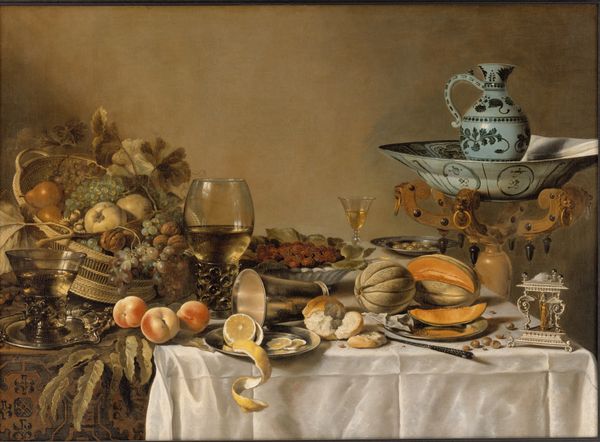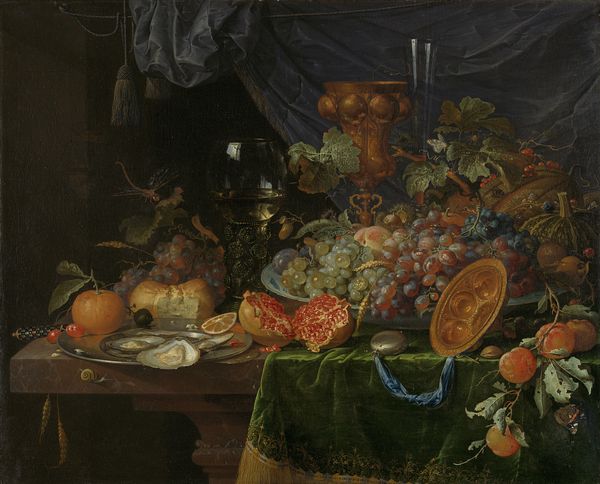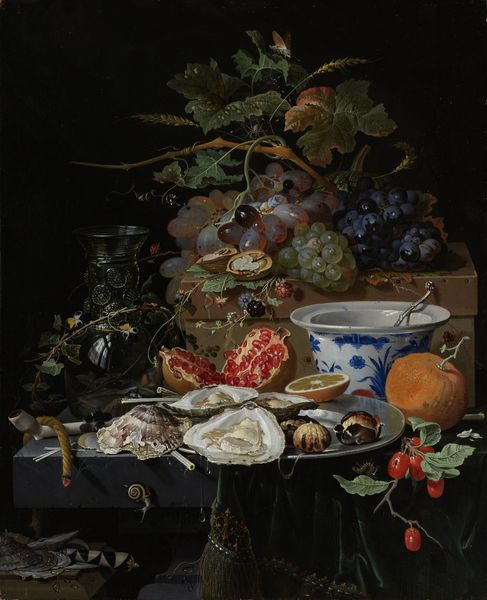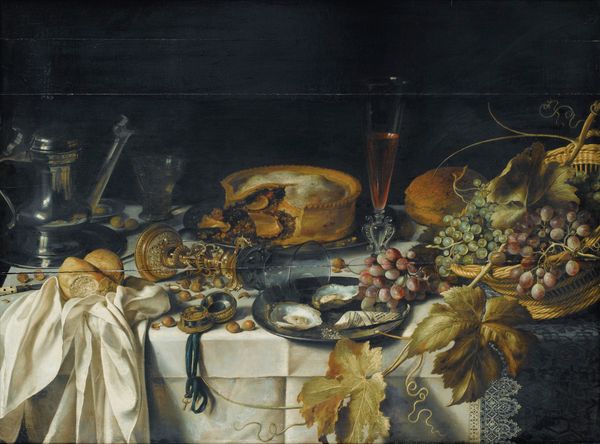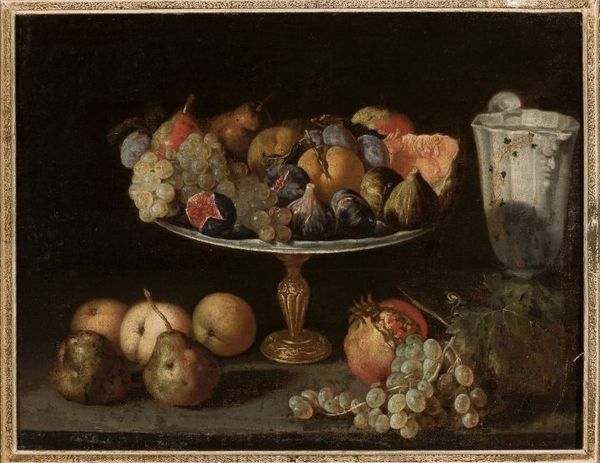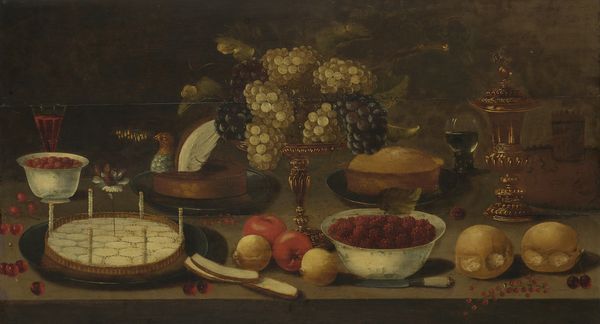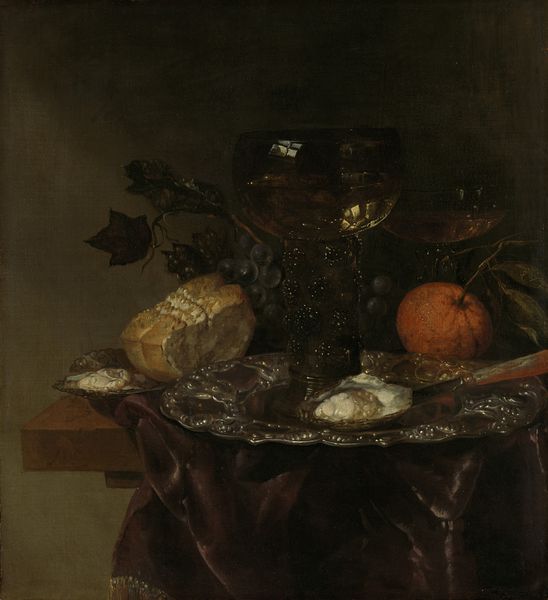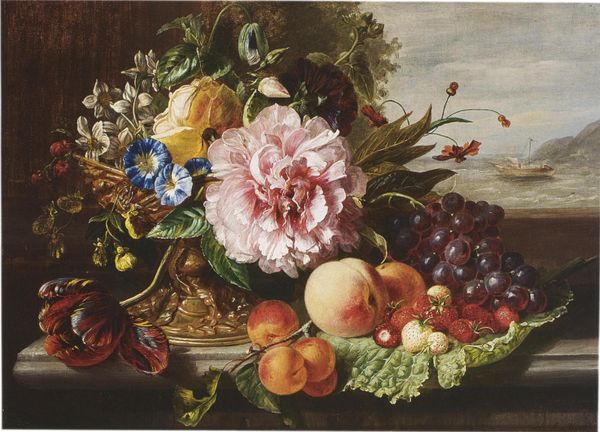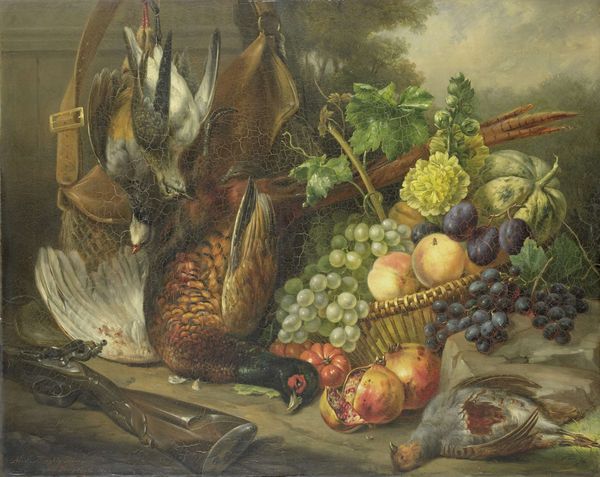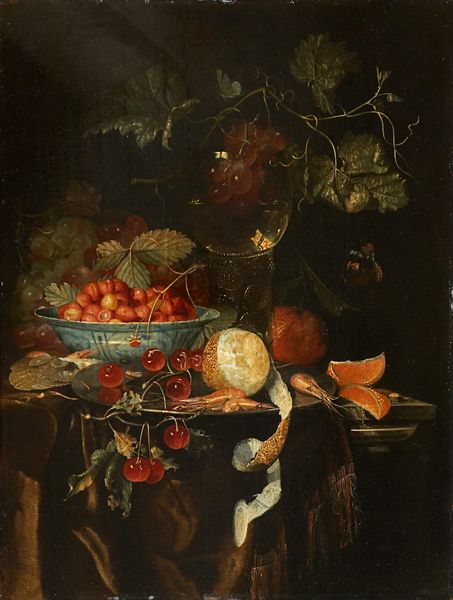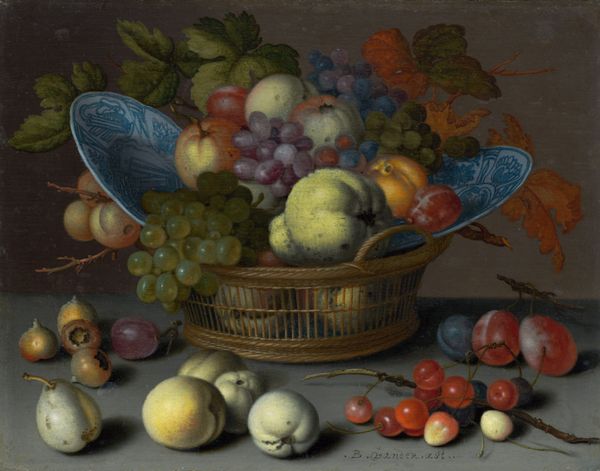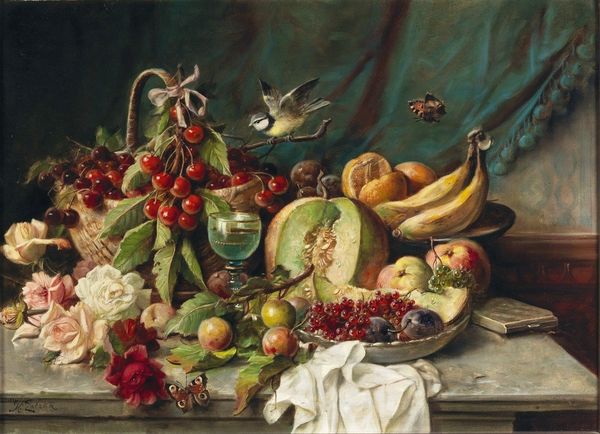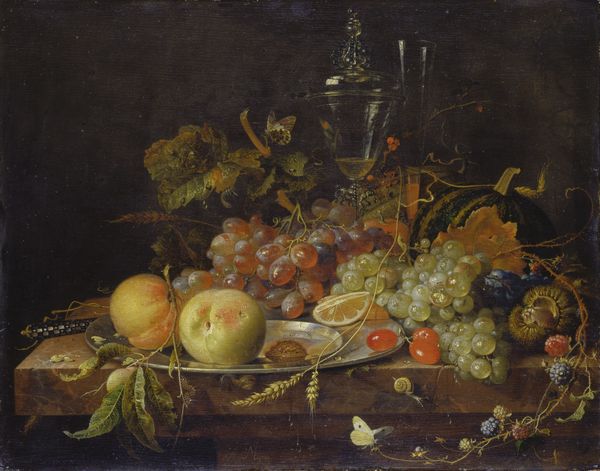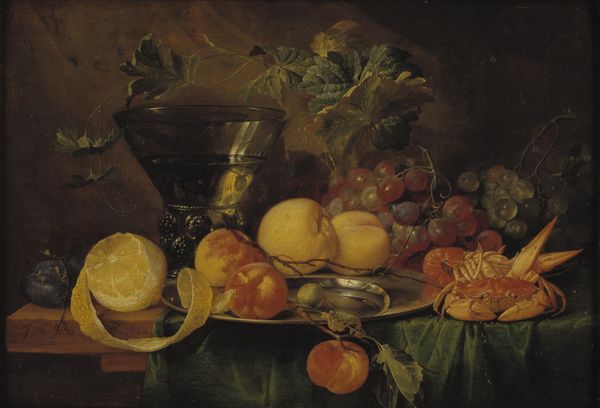
oil-paint
#
still-life
#
baroque
#
dutch-golden-age
#
oil-paint
#
oil painting
#
vanitas
#
realism
Copyright: Public domain
Curator: This captivating "Still Life" was masterfully rendered by Pieter Claesz around 1652, employing oil paint. What catches your eye initially about this composition? Editor: It’s a feast for the eyes, visually decadent, though something about it also feels a bit melancholic. The scale feels grand, opulent even. Is that crab staring back at me? Curator: Precisely. Observe how Claesz constructs the scene—the deliberate arrangement of objects creates a visual syntax. The textures, from the gleaming metalwork to the delicate grape skins, contribute to a complex semiotic interplay. The canvas presents an interplay of varied components united in the same plan. Editor: The imagery feels laden with symbolism. I see abundance, sure, with the overflowing fruit basket and that formidable crab, but there’s also that toppled glass, the peeled lemon...it whispers of something more fleeting. Curator: The tipped glass, for instance, destabilizes the visual order, while the lemon peel elegantly unfurls, introducing a dynamic element that disrupts the static nature of still life painting. It directs the eye across the objects on display and across the painting. Editor: A disruption that seems almost…deliberate. The vanitas theme springs to mind; reminders of mortality amid such extravagance. The crab itself has always been a powerful symbol. One moves side to side; these themes have connections that go beyond the Christian or European, across all the seven seas. Curator: Yes, these objects work as more than themselves; they symbolize the ephemeral nature of existence. Consider, too, how Claesz’s masterful realism reinforces this: the meticulous rendering makes these symbols all the more present, creating a sense of immanence but then quickly becoming a sense of imminent fading. Editor: It's that contrast that holds me—the tension between tangible indulgence and the looming shadow of mortality. Claesz reminds us of the ephemerality that lies beyond a moment's sensory pleasures. Curator: Indeed. A powerful illustration of how masterful composition, technique, and the conscious construction of visual motifs coalesce to communicate a deeply philosophical statement. Editor: Agreed. Looking closely, I'm struck by how timeless the themes explored here still feel. Pieter Claesz captured an enduring tension in this single moment.
Comments
No comments
Be the first to comment and join the conversation on the ultimate creative platform.
